Nombre:
Oya Heiwa Kannon
Otro:
Localización:
Récord: 27 m
Tipo: Estatuas
Categoría:
Foto:

Voto:
Continente: Asia
País: Japón
Localización: Utsunomiya, Prefectura Tochigi
Año: 1954
Estado: Terminado
Descripción:Utsunomiya’s Heiwa Kannon Statue
Near former Ohya stone quarry and Ohya Park
In the Ohya stone district in 1948 one stonemason began carving a giant Buddhist statue into a wall of rock. His name was Namizo Ueno. He had lost his two brothers in WWII and as he worked on the statue he prayed for world peace. But he soon ran out of funds and couldn’t continue his work. After that, the Ohya Tourist Association took over the project and asked a Professor Tobita—a sculptor, and professor at Tokyo National University of Fine Arts and Music—to complete the project. Tobita’s aesthetic sense would not accept Ueno’s previous work, and so he removed the head Ueno had already carved. Tobita started sculpting a new statue from the beginning with the support of a large team of assistants. The statue was entirely carved by hand and eventually finished in 1954. The statue was named Ohya Heiwa Kannon (the Peaceful Goddess of Mercy).
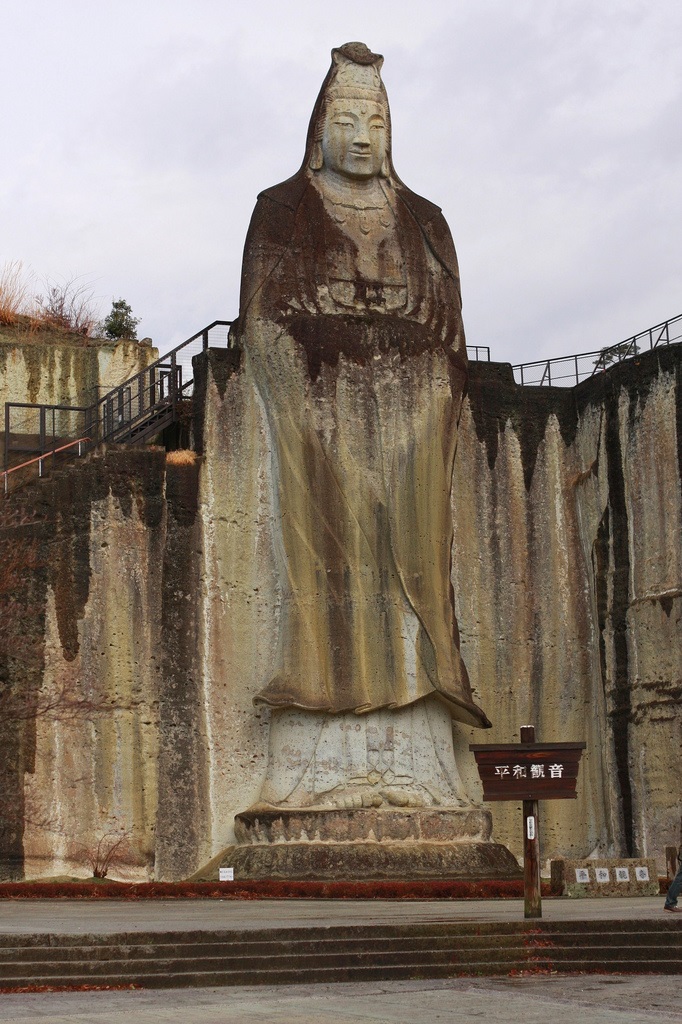
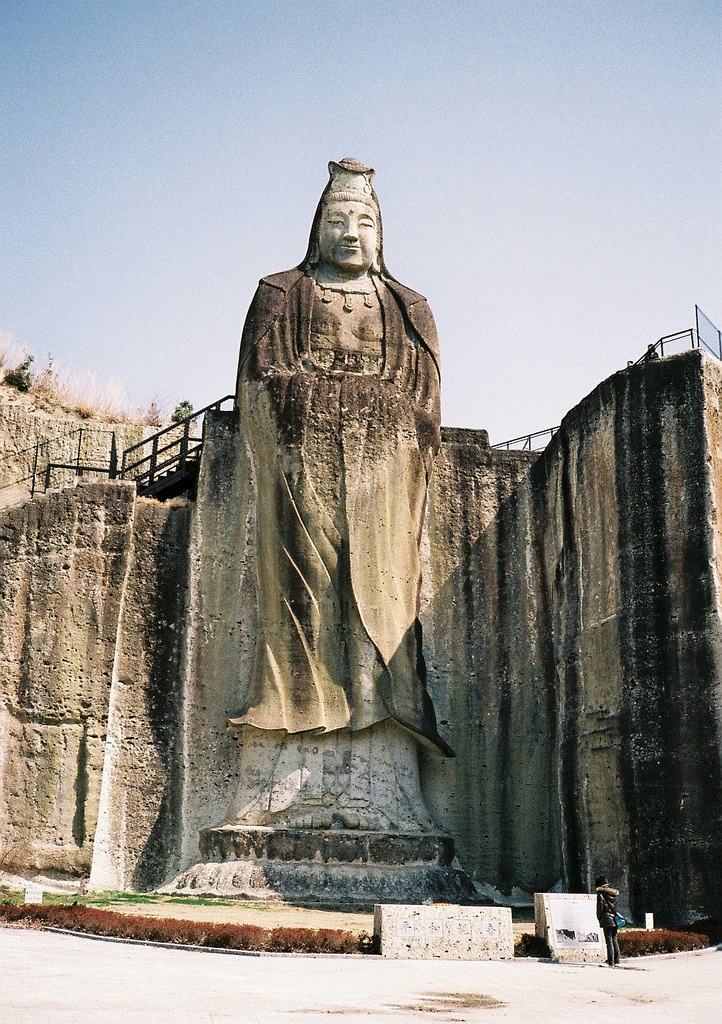
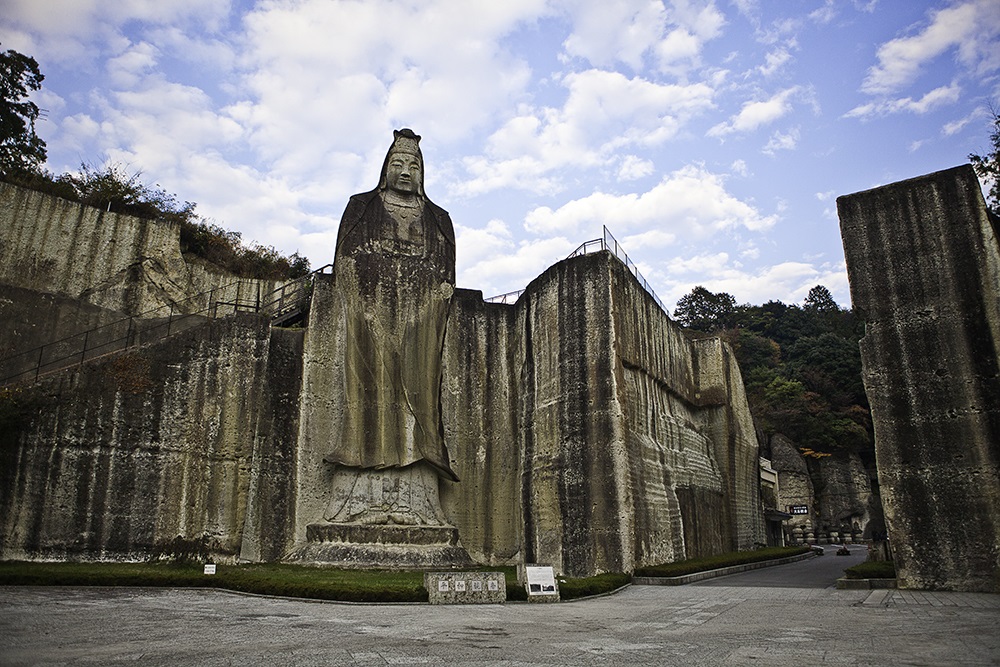

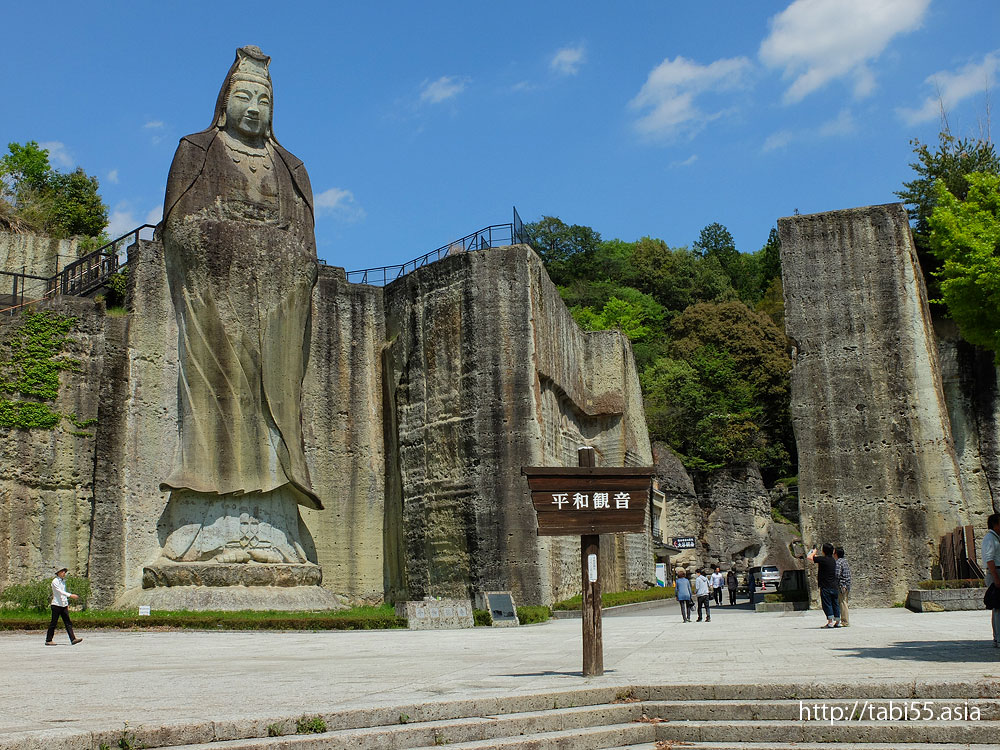
The statue is standing and measures 26.9m in height, 20m in girth, with a 5m tall face. It is equivalent in height to a nine-story building. You can go up some steps behind the statue, and view it from there as well. Near the statue, you can also view ruins of an old quarry. Beyond the statue, there are huge stone walls leading to the nearby Ohya-ji Temple.
Ohya stone district
After enjoying the statue, go through the stone walled corridor and turn left. You’ll soon see a temple on the right. It is Ohya-ji where an ancient skeleton was discovered in the cave of the temple in 1965. The cave also yielded ancient Buddhist stone carvings, various tools, and pots.
Go straight for a few minutes and turn right. Soon you’ll see peculiar craggy cliffs on both sides of the road. Walk a few minutes more until you reach a grass-covered field. This is Ohya Keikan Koen Park. It’s a good place to take a break. There are a few picnic tables here. The rock in front of you is natural Ohya stone and gives off a warm and soft feeling. You‘ll also see that it is extremely soft, warm and porous.
Famous buildings mainly constructed of Ohya stone
Frank Lloyd Wright designed the original Imperial Hotel Tokyo in 1921 using Ohya stone in a variety of ways. (The original Wright-designed hotel has since been moved to Meiji-mura Inuyama, Nagoya and reconstructed there.) He purchased one entire mountain in Ohya for the purpose of building the hotel.
Matsugamine Church in Utsunomiya, the work of Swiss architect Max Hinder, is also built of Ohya stone, giving the church a tranquil and calm atmosphere with their natural color tones.
Ohya stone originated from volcanic activity 20 million years ago. The volcano produced pumice stone fields in the northwest area of Utsunomiya. The fields are 8km from east to west, 37km from south to north, and reach 200 to 300 meters under the ground. The estimated stone reserves here are one billion tons. Some of mines are still open for business. Ohya stone is light, fireproof, and easy to process. This stone is exclusive to Ohya. High grade Ohya stone is beautifully white and its surface color doesn’t change even after a long time has passed.
How about strolling around this interesting place as a half-day excursion from Utsunomiya?
http://en.japantravel.com/view/utsunomiya-s-heiwa-kannon-statue
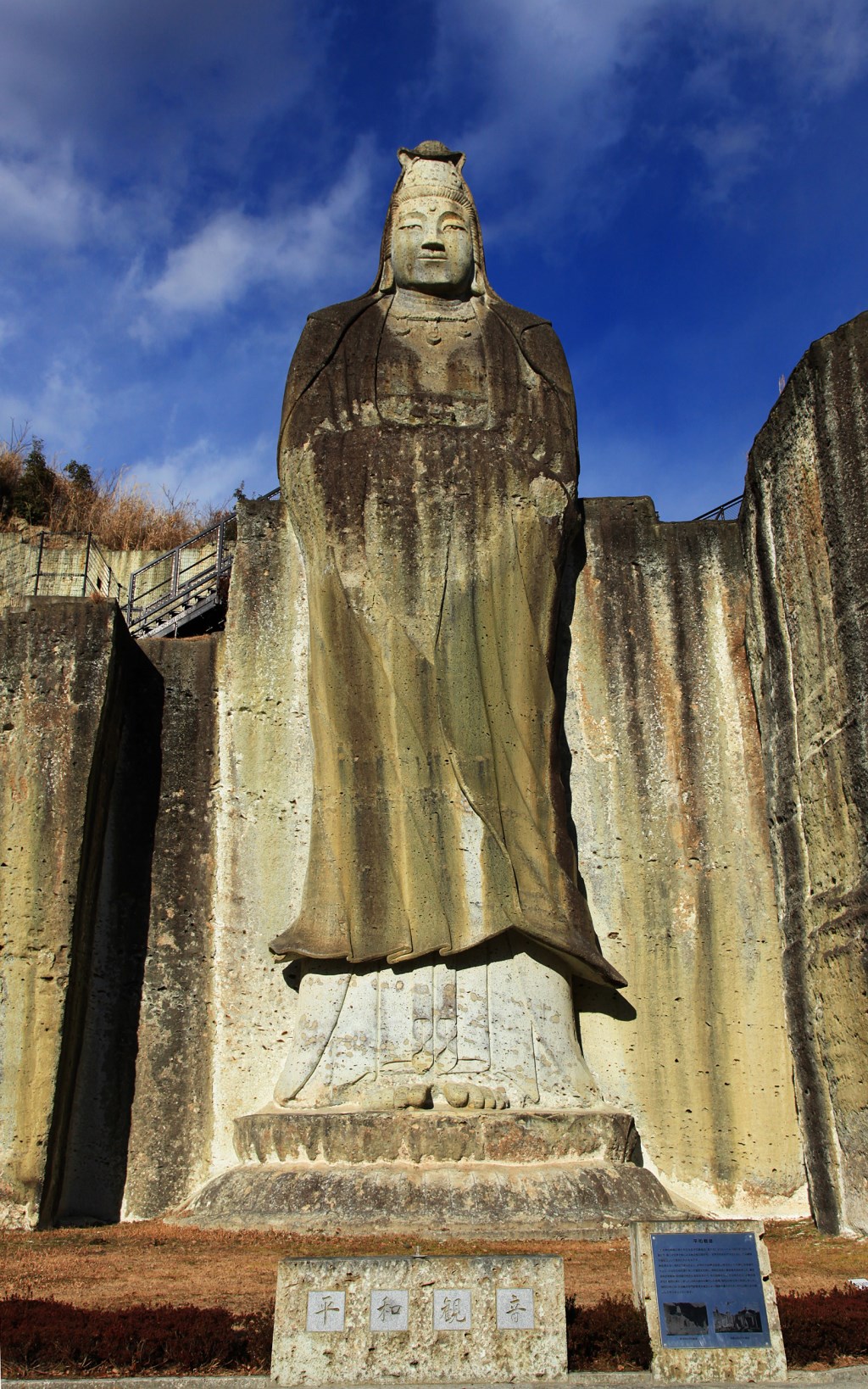
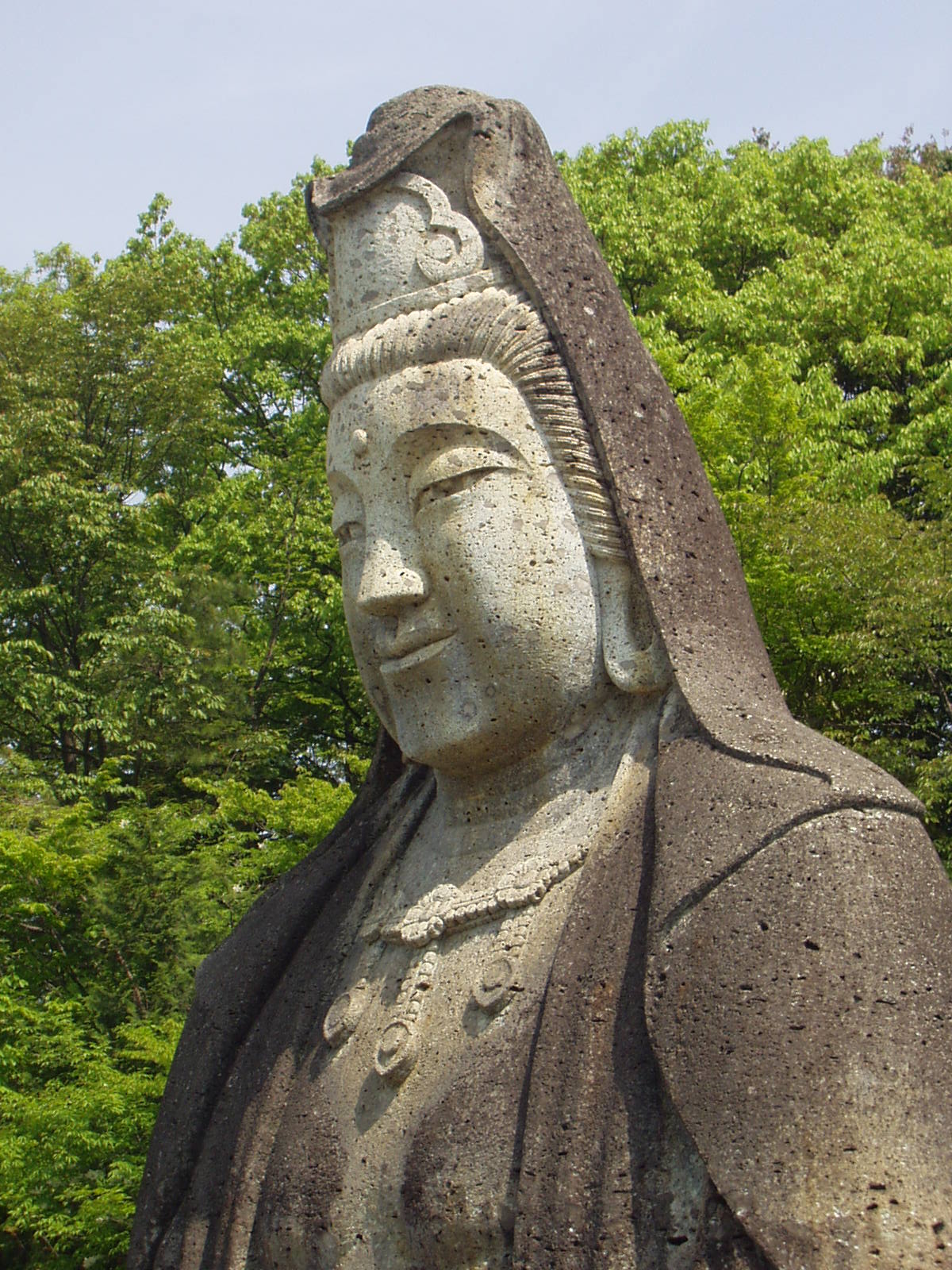
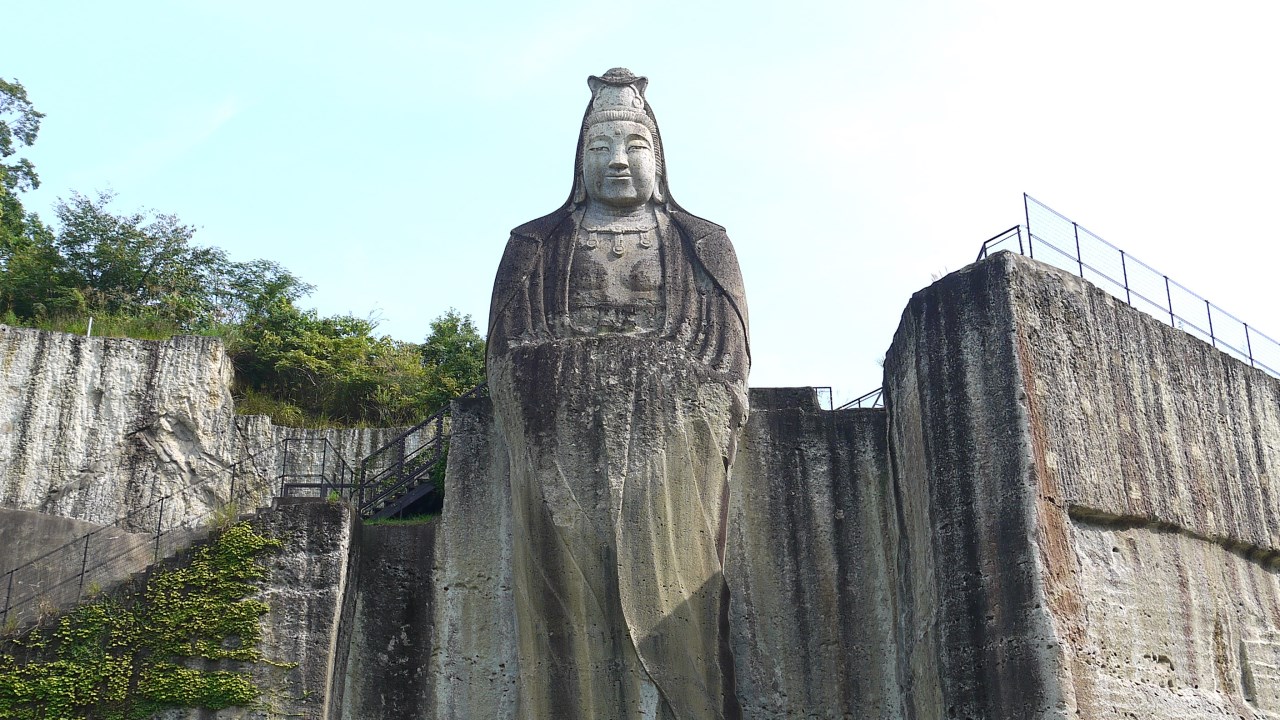

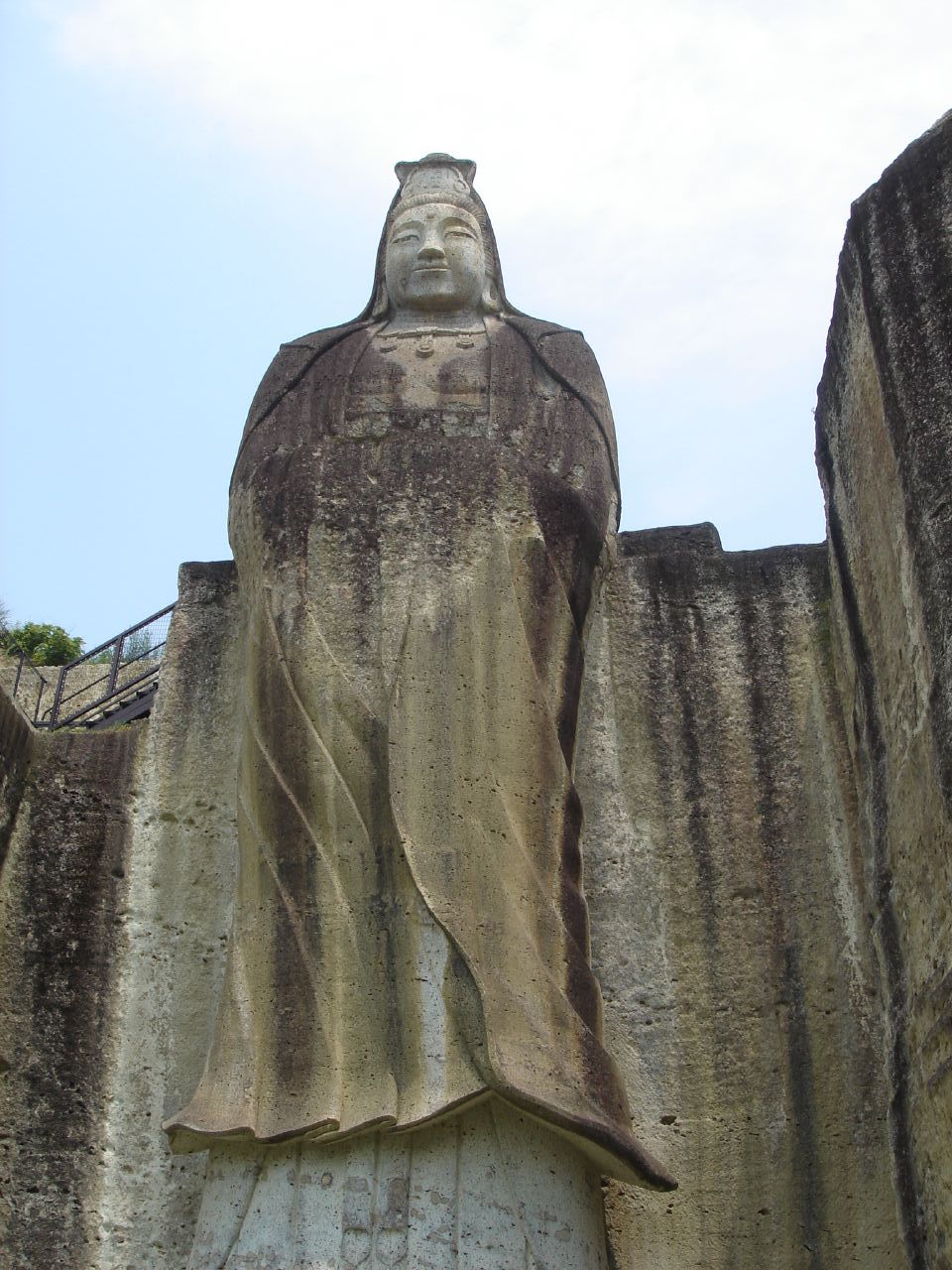
What is Ōya-ishi?
Ōya-ishi (大谷石 or Ōya stone) a igneous rock, created from lava and ash and is known as tuff:
Ōya-ishi was produced when the Japanese landmass rifted from the continent to form the archipelago, beginning around 20 million years ago. The quarry at Ōya-machi (Town of Ōya) near Utsunomiya-shi (Utsunomiya City), Tochigi-ken (Tochigi Prefecture), is one of the best known sources of tuff building stone in Japan. The underground mine is now disused and has been transformed into a museum.
Back to Frank Lloyd Wright... the use of Ōya-ishi is what characterizes Wright architecture in Japan.
However... originally, Wright was going to use a rock called hachi-no-su ishi from Shimane-ken (Shimane Prefecture), but there simply wasn't enough of it in Wright's mind, so he used his second choice of Ōya-ishi.
While Wright utilized Ōya-ishi for building exteriors, interior pillars, stairs and more, but it wasn't merely used as a simple stone... nope... he used it to carve in - in places - sophisticated designs of local plants, as a motif.
It was the softness and ease of carving that Wright enjoyed for decoration. The rock's texture featuring an uneven surface, and its warm brown colors always matched well with a Wright-designed building's exterior. As an added bonus, since the tuff rock was formed by volcanic activity over 200,000 years ago, the rock often contains bits of wood and seashells, adding to the charm of the buildings.
It enabled Wright to show off nature with his architecture quite easily.
Of course, Wright was not the first nor only person to use Ōya-ishi. For centuries, locals had been using the tuff to construct storehouses, walls, and gateposts because, despite its ease of carving, it is a durable rock.
The stones of Ōya Stone Mining was already popular in year 741.
The stone tower of Kokubunji Temple was built with Ōya-ishi. In year 810, Ōya Kannon was created on the cliffs of the Ōya-ishi.
Because tuff is an easily worked stone, it was cut to form blocks for walls, foundations and pavements, or carved into stone lanterns for gardens and animal guardians for shrines. Not until the Meiji period (1868 - 1912) did whole buildings begin to be made of tuff.
Wright, however, was the first architect to use it as a true building material. In fact during Wright's time in Japan between 1917 - 1922 (during the Taisho-jidai or Taisho era), granite was the most popular stone for building, so Wright's decision to utilize Ōya-ishi showed true originality.
What can one say about Wright except that he made the town of Ōya famous and helped drive up the price of the tuff rock, ensuring the miners there would get a bit more money but that locals might no longer be able to afford the stone to create a gatepost.
Anyhow... Ōya-ishi is only found in an area four kilometers east-west by six kilometers north-south around Ōya, but there are reserves of some 600 million tons.
At the main Ōya-ishi mine, the cavern was used during WWII as a military storehouse. It was also used as a secret underground factory for the Nakajima Aircraft Co. and Zero fighters were built there.
After WWII, it was used to build stone walls and housing complexes throughout Japan.
But it's not just one cave the gives the Ōya tuff - there are over 100 locations around Ōya.
In the 1970s, about 120 companies mined nearly 900,000 tons a year, but demand plummeted when concrete became an affordable and popular substitute. Nowadays only 12 companies mine about 24,000 tons a year.
"In the old days, night and day without ceasing, trucks went by loaded with Ōya stone," says Tomura Kazusuke (surname first), 68, director of a local stone industry association, speaking wistfully of the past.
The cavern is also now used for concerts and for making films, as it has excellent acoustics. But... if you are seeing a concert there - bring a sweater! It's cavernous and cold, averaging about 8C.
http://wonderfulrife.blogspot.com.es/2012/03/frank-lloyd-wright-gets-stoned.html
Heiwa Kannon(平和観音) is located Utsunomiya, Tochigi. It is 27m high Kannon Statue made by Oya Stone. It was built for the world peace and memorial for soldiers who had died during the WWII. It was designed by Mr. Asajiro Hida, and took 6 years to finish.
http://www.mustlovejapan.com/subject/heiwa_kannon/
http://ja.wikipedia.org/wiki/大谷平和観音
Pinche para ver las Fuentes seleccionadas
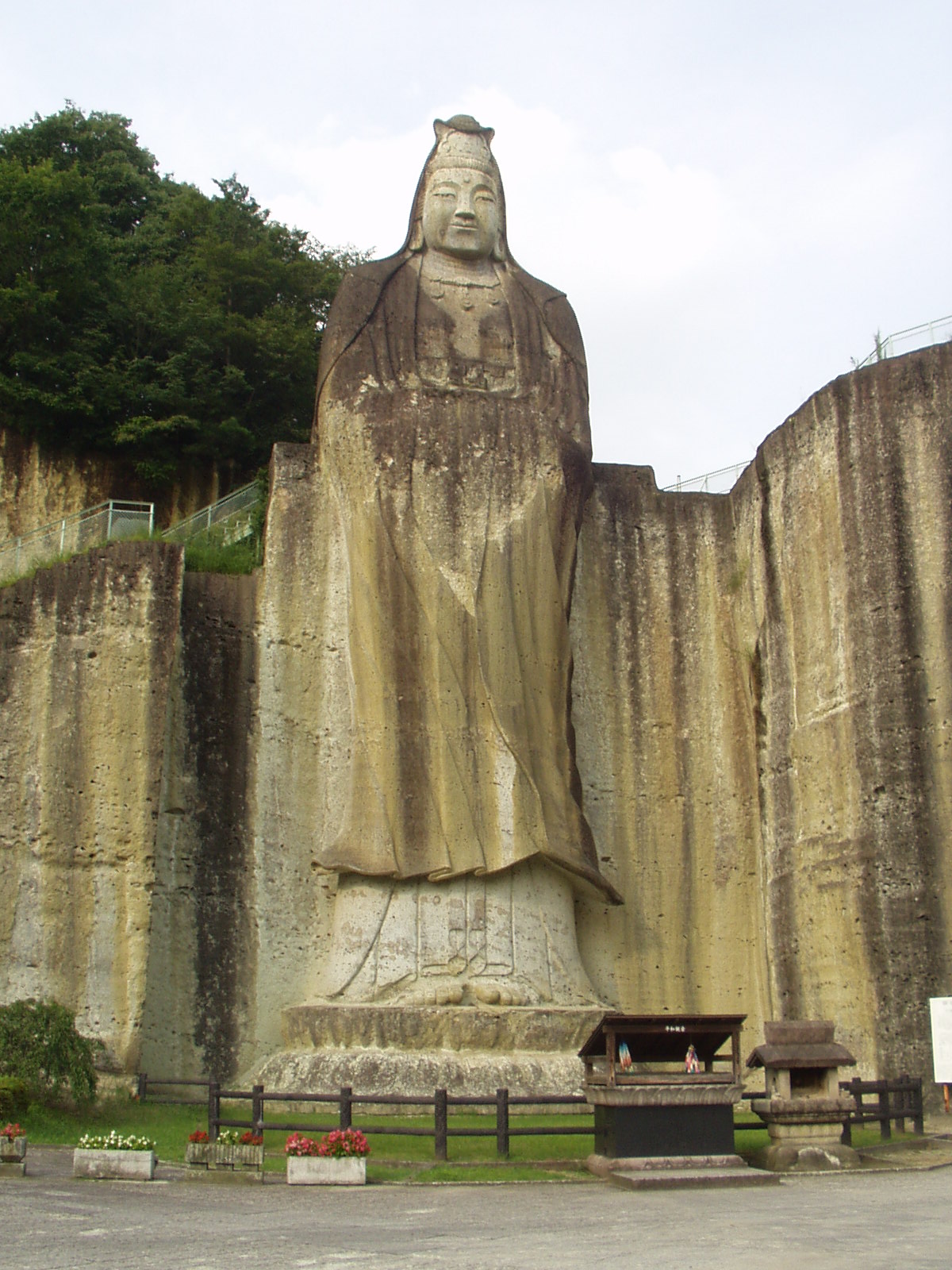
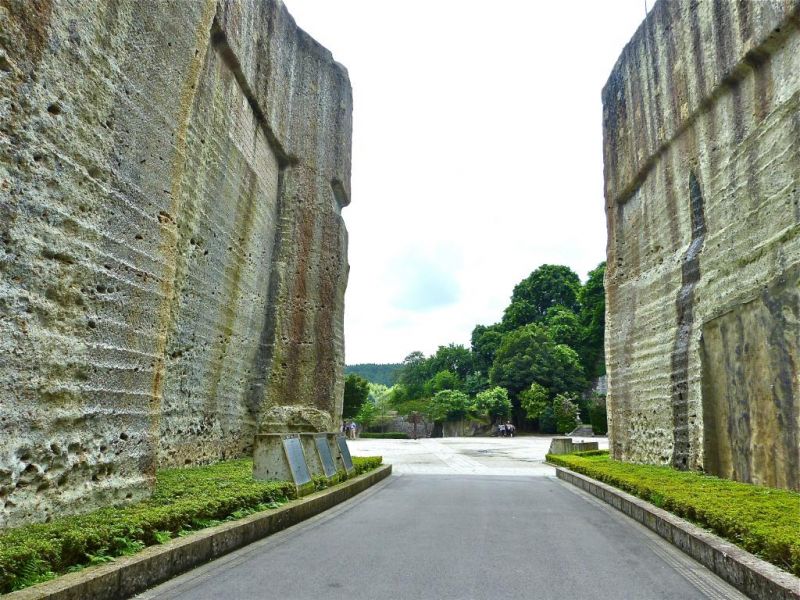
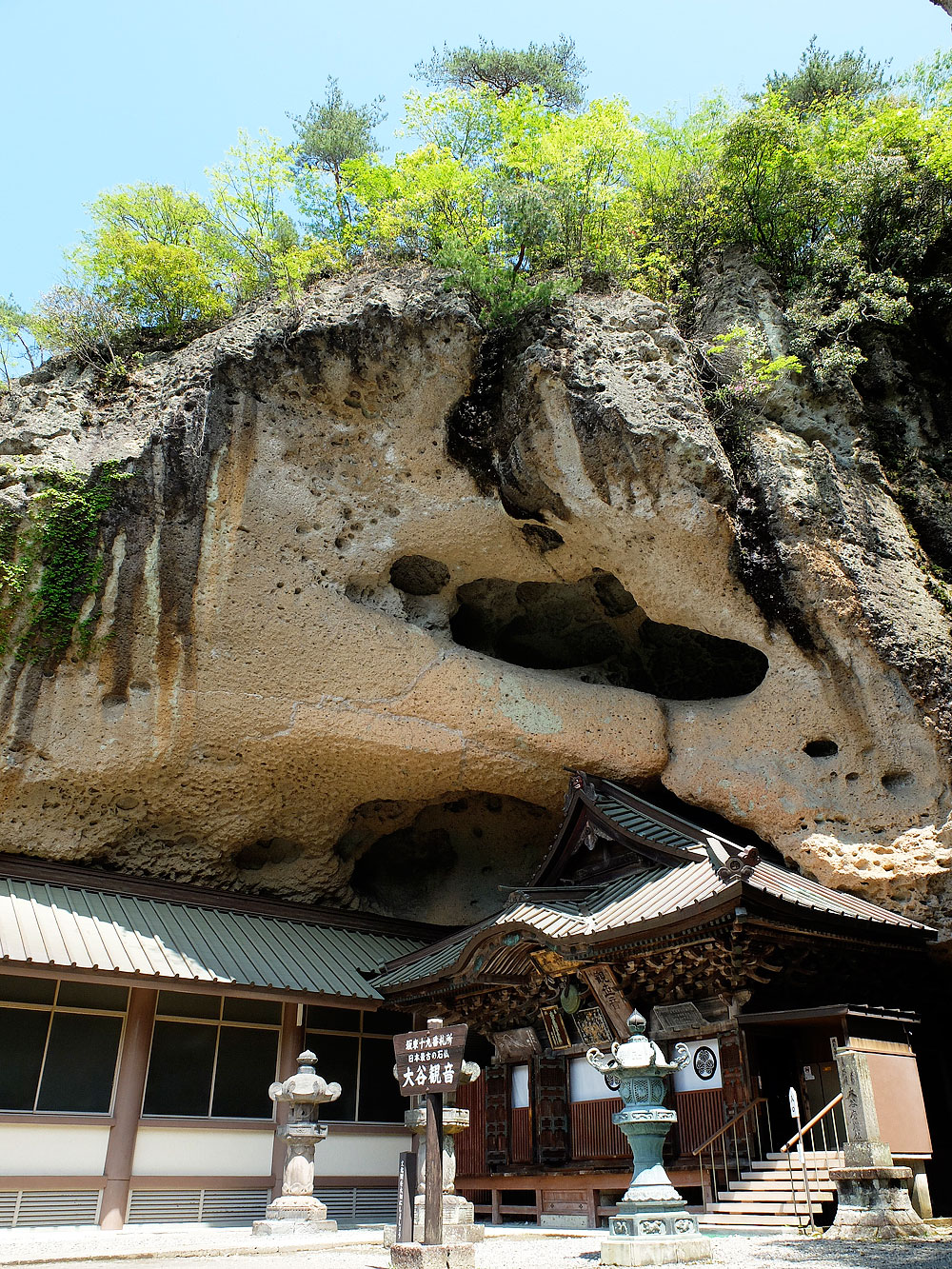
Vídeo:
Contador: 6867
Inserción: 2014-05-27 13:04:57
Lugares a visitar en un radio de 100 km (en línea recta)
Mapa de los lugares a 100 km (en línea recta)
Mostrando Registros desde el 1 hasta el 0 de un total de 0
Visitas |
Más visitados Basílica de San Marcos 154939 Catedral de Notre Dame (París) 144238 Torre de Pisa 131577 Monte Saint-Michel 100685 Presa de las Tres Gargantas 81536 |
Incorporaciones |
Comentarios hazola Cúpula de la Roca gracias me... gera Buenos Aires las mejores fotos de la mejor ciudad del... Daniel M. - BRASIL San Francisco ... PEQUE Presa Chicoasén SERA QUE ALGUIEN ME PUEDE DAR MAS INFORMACIÓN DE ESTE PROYECTO ESTUDIO EN LA UNACH Y ES PARA UN... Mery Huaca Pucllana Muy interesante, muy buena la información y... |
 Tweet
Tweet


